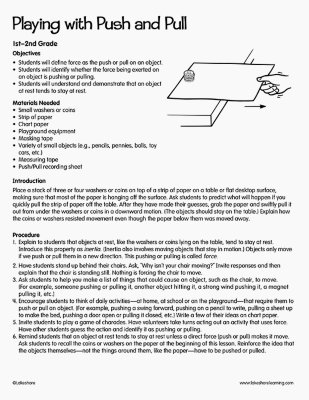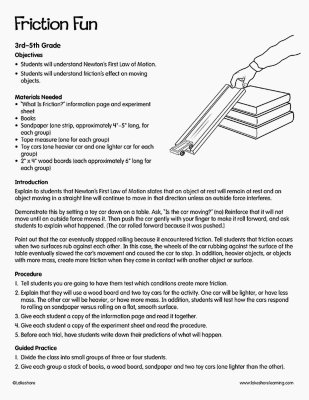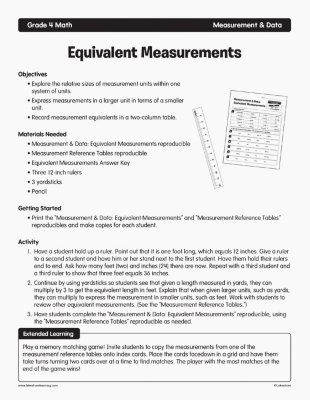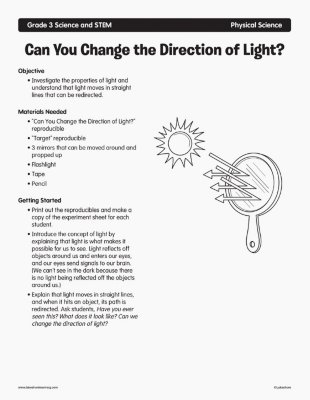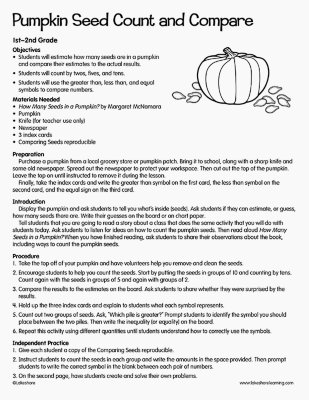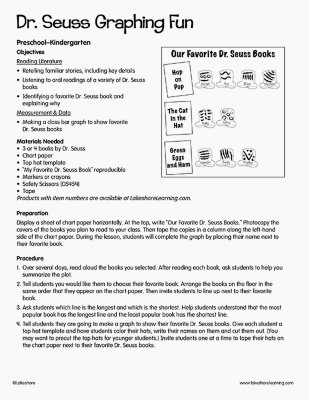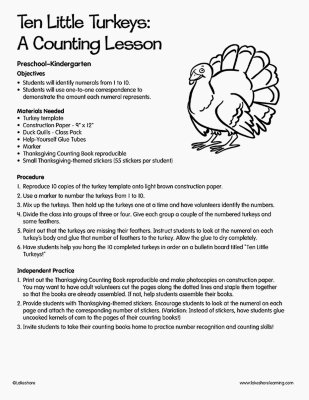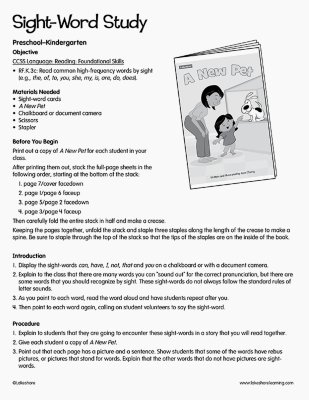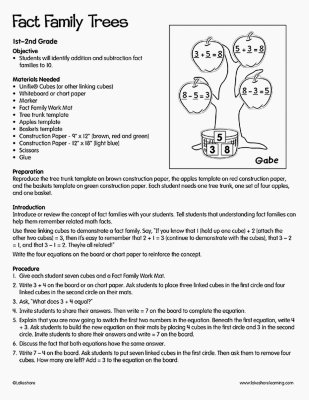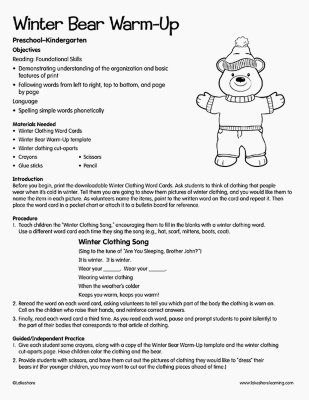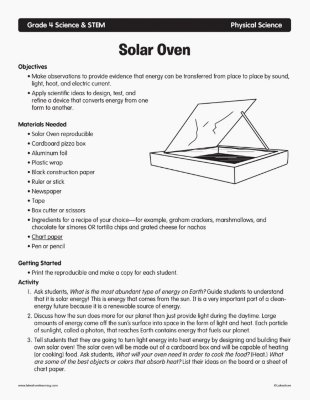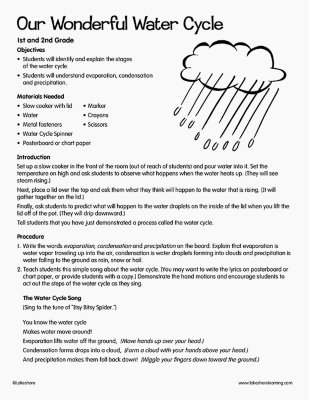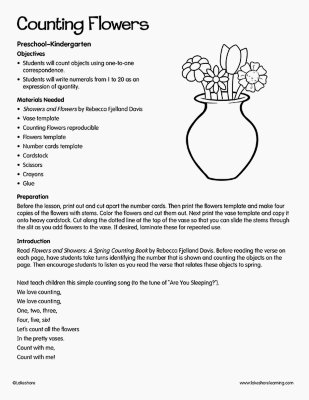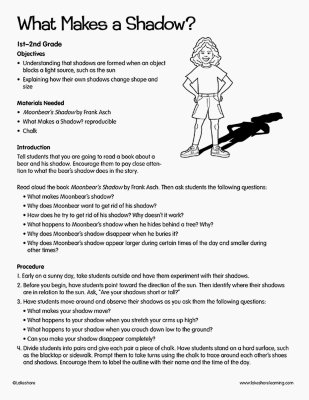Narrow by Grade
Grade
15 results for "table top light table/"
Playing with Push and Pull
1st Grade - 2nd Grade
Objectives Students will define force as the push or pull on an object. Students will identify whether the force being exerted on an object is pushing or pulling. Students will understand and demonstrate that an object at rest tends to stay at rest. Materials Needed Small washers or coins Strip of paper Chart paper Playground equipment Masking tape Variety of small objects (e.g., pencils, pennies, balls, toy cars, etc.) Measuring tape Push/Pull recording sheet Introduction Place a stack of three or four washers or coins on top of a strip of paper on a table or flat desktop surface, making sure that most of the paper is hanging off the surface. Ask students to predict what will happen if you quickly pull the strip of paper off the table. After they have made their guesses, grab the paper and swiftly pull it out from under the washers or coins in a downward motion. (The objects should stay on the table.) Explain how the coins or washers resisted movement even though the paper below them was moved away.
View Lesson PlanFriction Fun
4th Grade
Objectives Students will understand Newton’s First Law of Motion. Students will understand friction’s effect on moving objects. Materials Needed “What Is Friction?” information page and experiment sheet Books Sandpaper (one strip, approximately 4" - 5" long, for each group) Tape measure (one for each group) Toy cars (one heavier car and one lighter car for each group) 2" x 4" wood boards (each approximately 6" long for each group) Introduction Explain to students that Newton’s First Law of Motion states that an object at rest will remain at rest and an object moving in a straight line will continue to move in that direction unless an outside force interferes. Demonstrate this by setting a toy car down on a table. Ask, “Is the car moving?” (no) Reinforce that it will not move until an outside force moves it. Then push the car gently with your finger to make it roll forward, and ask students to explain what happened. (The car rolled forward because it was pushed.) Point out that the car eventually stopped rolling because it encountered friction. Tell students that friction occurs when two surfaces rub against each other. In this case, the wheels of the car rubbing against the surface of the table eventually slowed the car’s movement and caused the car to stop. In addition, heavier objects, or objects with more mass, create more friction when they come in contact with another object or surface.
View Lesson PlanEquivalent Measurements
4th Grade
Objectives
- Explore the relative sizes of measurement units within one system of units.
- Express measurements in a larger unit in terms of a smaller unit.
- Record measurement equivalents in a two-column table.
Can You Change the Direction of Light?
3rd Grade
Objective
- Investigate the properties of light and understand that light moves in straight lines that can be redirected.
Counting Apples
Kindergarten
Objectives CCSS Math/Counting & Cardinality K.CC.B.4: Understand the relationship between numbers and quantities; connect counting to cardinality. K.CC.B.5: Count to answer “how many?” questions about as many as 20 things arranged in a line, a rectangular array, or a circle, or as many as 10 things in a scattered configuration; given a number from 1?20, count out that many objects. Materials Needed The Very Hungry Caterpillar by Eric Carle Apple Doodle Apple Accents or large apple template and Construction Paper - 9" x 12" (red) Apple Tree counting mat Apple counters (20 per student) Thin-Line Permanent Markers - Black Photo of each student from the shoulders up (Photos shouldn't measure more than 4" high.) Construction Paper - 12" x 18" “I have ______ apples up on top!” writing frame Lakeshore Glue Sticks Safety Scissors Tape Preparation: Count out a set of 20 Apple Doodle Apple Accents and use a marker to number them from 1 to 20. Or, if you prefer, download and print out the large apple template and trace it onto red construction paper. Use scissors to make 20 large apple cutouts, and then number the cutouts from 1 to 20. Introduction Read aloud The Very Hungry Caterpillar by Eric Carle. As you read, point to the apples on top of the characters? heads and have the class count them aloud together.
View Lesson PlanPumpkin Seed Count and Compare
1st Grade - 2nd Grade
Objectives Students will estimate how many seeds are in a pumpkin and compare their estimates to the actual results. Students will count by twos, fives, and tens. Students will use the greater than, less than and equal symbols to compare numbers. Materials Needed How Many Seeds in a Pumpkin? by Margaret McNamara Pumpkin Knife (for teacher use only) Newspaper 3 index cards Comparing Seeds reproducible Preparation: Purchase a pumpkin from a local grocery store or pumpkin patch. Bring it to school, along with a sharp knife and some old newspaper. Spread out the newspaper to protect your workspace. Then cut out the top of the pumpkin. Leave the top on until instructed to remove it during the lesson. Finally, take the index cards and write the greater than symbol on the first card, the less than symbol on the second card, and the equal sign on the third card. Introduction Display the pumpkin and ask students to tell you what’s inside (seeds). Ask students if they can estimate, or guess, how many seeds there are. Write their guesses on the board or on chart paper. Tell students that you are going to read a story about a class that does the same activity that you will do with students today. Ask students to listen for ideas on how to count the pumpkin seeds. Then read aloud How Many Seeds in a Pumpkin? When you have finished reading, ask students to share their observations about the book, including ways to count the pumpkin seeds.
View Lesson PlanDr. Seuss Graphing Fun
Kindergarten
Objectives Reading Literature Retelling familiar stories, including key details Listening to oral readings of a variety of Dr. Seuss books Identifying a favorite Dr. Seuss book and explaining why Measurement & Data Making a class bar graph to show favorite Dr. Seuss books Materials Needed 3 or 4 books by Dr. Seuss Chart paper Top hat template “My Favorite Dr. Seuss Book” reproducible Markers or crayons Safety Scissors Tape Preparation Display a sheet of chart paper horizontally. At the top, write “Our Favorite Dr. Seuss Books.” Photocopy the covers of the books you plan to read to your class. Then tape the copies in a column along the left-hand side of the chart paper. During the lesson, students will complete the graph by placing their name next to their favorite book.
View Lesson PlanTen Little Turkeys: A Counting Lesson
Pre-K - Kindergarten
Objectives Understanding the relationship between numbers and quantities When counting objects, saying the number names, pairing each object with only one number name and each number name with only one object Counting up to 20 items in a line, rectangular array or circle, or up to 10 items in a scattered configuration; counting out objects up to 20 Materials Needed Turkey template Construction Paper - 9" x 12" (a variety of colors, including 10 pages of light brown) Duck Quills - Class Pack Help-Yourself Glue Tubes Marker Thanksgiving Counting Book reproducible Small Thanksgiving - themed stickers (55 stickers per student)
View Lesson PlanSight-Word Study
Pre-K - Kindergarten
Objective CCSS Language: Reading: Foundational Skills RF.K.3c: Read common high-frequency words by sight (e.g., the, of, to, you, she, my, is, are, do, does). Materials Needed Sight-word cards A New Pet Chalkboard or document camera Scissors Stapler Before You Begin Print out a copy of A New Pet for each student in your class. After printing them out, stack the full-page sheets in the following order, starting at the bottom of the stack: page 7/cover facedown page 1/page 6 faceup page 5/page 2 facedown page 3/page 4 faceup Then carefully fold the entire stack in half and make a crease. Keeping the pages together, unfold the stack and staple three staples along the length of the crease to make a spine. Be sure to staple through the top of the stack so that the tips of the staples are on the inside of the book. Introduction Display the sight-words can, have, I, not, that and you on a chalkboard or with a document camera. Explain to the class that there are many words you can “sound out” for the correct pronunciation, but there are some words that you should recognize by sight. These sight-words do not always follow the standard rules of letter sounds. As you point to each word, read the word aloud and have students repeat after you. Then point to each word again, calling on student volunteers to say the sight-word.
View Lesson PlanFact Family Trees
1st Grade
Objective Students will identify addition and subtraction fact families to 10. Materials Needed Unifix® Cubes (or other linking cubes) Whiteboard or chart paper Marker Fact Family Work Mat Tree trunk template Apples template Baskets template Construction Paper - 9" x 12" (brown, red and green) Construction Paper - 12" x 18" (light blue) Scissors Glue Preparation: Reproduce the tree trunk template on brown construction paper, the apples template on red construction paper, and the baskets template on green construction paper. Each student needs one tree trunk, one set of four apples, and one basket. Introduction Introduce or review the concept of fact families with your students. Tell students that understanding fact families can help them remember related math facts. Use three linking cubes to demonstrate a fact family. Say, “If you know that 1 (hold up one cube) + 2 (attach the other two cubes) = 3, then it’s easy to remember that 2 + 1 = 3 (continue to demonstrate with the cubes), that 3 - 2 = 1, and that 3 – 1 = 2. They’re all related!” Write the four equations on the board or chart paper to reinforce the concept.
View Lesson PlanWinter Bear Warm-Up
Pre-K - Kindergarten
Objectives Reading: Foundational Skills Demonstrating understanding of the organization and basic features of print Following words from left to right, top to bottom, and page by page Language Spelling simple words phonetically Materials Needed Winter Clothing Word Cards Winter Bear Warm-Up template Winter clothing cut-aparts Crayons Scissors Glue sticks Pencil Introduction Before you begin, print the downloadable Winter Clothing Word Cards. Ask students to think of clothing that people wear when it’s cold in winter. Tell them you are going to show them pictures of winter clothing, and you would like them to name the item in each picture. As volunteers name the items, point to the written word on the card and repeat it. Then place the word card in a pocket chart or attach it to a bulletin board for reference.
View Lesson PlanSolar Oven
4th Grade
Objectives
- Make observations to provide evidence that energy can be transferred from place to place by sound, light, heat, and electric current.
- Apply scientific ideas to design, test, and refine a device that converts energy from one form to another.
Our Wonderful Water Cycle
1st Grade - 2nd Grade
Objectives Students will identify and explain the stages of the water cycle. Students will understand evaporation, condensation and precipitation. Materials Needed Slow cooker with lid Water Posterboard or chart paper Marker Water Cycle Spinner Crayons Scissors Metal fasteners Introduction Set up a slow cooker in the front of the room (out of reach of students) and pour water into it. Set the temperature on high and ask students to observe what happens when the water heats up. (They will see steam rising.) Next, place a lid over the top and ask them what they think will happen to the water that is rising. (It will gather together on the lid.) Finally, ask students to predict what will happen to the water droplets on the inside of the lid when you lift the lid off of the pot. (They will drip downward.) Tell students that you have just demonstrated a process called the water cycle.
View Lesson PlanCounting Flowers
Pre-K
Objectives Students will count objects using one-to-one correspondence. Students will write numerals from 1 to 20 as an expression of quantity. Materials Needed Flowers and Showers: A Spring Counting Book by Rebecca Fjelland Davis Vase template Counting Flowers reproducible Flowers template Number cards template Cardstock Scissors Crayons Glue Preparation: Before the lesson, print out and cut apart the number cards template. Then print the flowers template and make four copies of the flowers with stems. Color the flowers and cut them out. Next print the vase template and copy it onto heavy cardstock. Cut along the dotted line at the top of the vase so that you can slide the stems through the slit as you add flowers to the vase. If desired, laminate these for repeated use. Introduction Read Flowers and Showers: A Spring Counting Book by Rebecca Fjelland Davis. Before reading the verse on each page, have students take turns identifying the number that is shown and counting the objects on the page. Then encourage students to listen as you read the verse that relates these objects to spring. Next teach children this simple counting song (to the tune of “Are You Sleeping?”). We love counting, We love counting, One, two, three, Four, five, six! Let’s count all the flowers In the pretty vases. Count with me, Count with me!
View Lesson PlanWhat Makes a Shadow?
1st Grade
Objectives Understanding that shadows are formed when an object blocks a light source, such as the sun Explaining how their own shadows change shape and size Materials Needed Moonbear’s Shadow by Frank Asch What Makes a Shadow? reproducible Chalk Introduction Tell students that you are going to read a book about a bear and his shadow. Encourage them to pay close attention to what the bear’s shadow does in the story. Read aloud the book Moonbear’s Shadow by Frank Asch. Then ask students the following questions: What makes Moonbear’s shadow? Why does Moonbear want to get rid of his shadow? How does he try to get rid of his shadow? Why doesn’t it work? What happens to Moonbear’s shadow when he hides behind a tree? Why? Why does Moonbear’s shadow disappear when he buries it? Why does Moonbear’s shadow appear larger during certain times of the day and smaller during other times?
View Lesson Plan